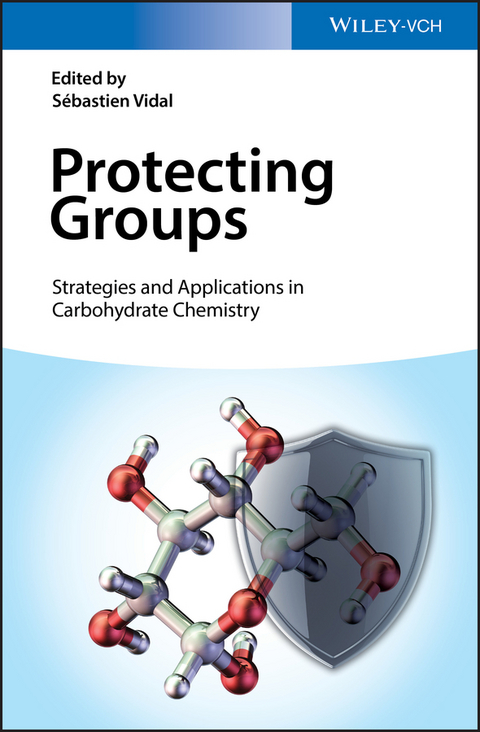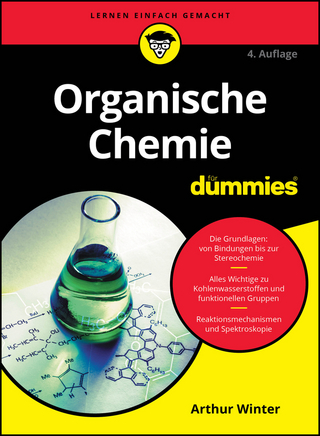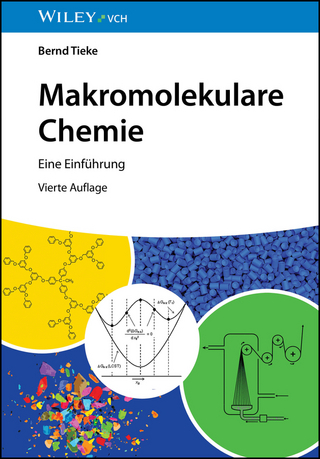Protecting Groups
Wiley-VCH (Verlag)
978-3-527-34010-1 (ISBN)
Sébastien Vidal, PhD, holds a CNRS position at the University of Lyon, France. His main area of research is the design of glycoclusters for anti-adhesive strategy against bacterial infections and enzyme inhibitors targeting glycogen phosphorylase with applications in type-2 diabetes. In 2014, he was given the young investigator award "Prix du Groupe Français des Glycosciences".
1. Protecting Group Strategies in Carbohydrate Chemistry (A. G. Volbeda, G. A. van der Marel, J. D. C. Codée)
2. Protecting Groups at the Primary Position of Carbohydrates (M. Donnier-Maréchal, S. Vidal, M. Fiore)
3. Protecting Groups at the Secondary Position of Carbohydrates (S. Vidal, P. G. Goekjian)
4. Regioselective Protection at the Secondary Position of Carbohydrates with Acyclic Protecting Groups (P. G. Goekjian, S. Vidal)
5. Protecting Groups at the Anomeric Position of Carbohydrates (C. Sakonsinsiri, W. Bruce Turnbull)
6. N-Protecting Groups for 2-Amino-2-Deoxy-Glycosides (S. Vidal)
7. One-Pot Multi-Step Regioselective Protection of Carbohydrates Catalyzed by Acids (J.-M. Beau, Y. Bourdreux, G. Despras, A. Gouasmat, G. San Jose, D. Urban, B. Vauzeilles)
8. Acyl Migrations in Carbohydrate Chemistry (F. S. Ekholm, R. Leino)
9. De Novo Asymmetric Synthesis of Oligosaccharides Using Atom-Less Protecting Groups (D. Ray, G. A. O'Doherty)
10. Protecting Group Strategies for Sialic Acid Derivatives (H. Amarasekara, S. Buda, A. Reddy Mandhapati, D. Crich)
11. Strategies Towards Protection of 1,2- and 1,3-Diols in Carbohydrate Chemistry (M. Schuler, A. Tatibouët)
12. Protecting Group Strategies Towards Glycofuranoses (V. Ferrières, L. Legentil, L. Lemiègre)
13. Cyclodextrin Chemistry via Selective Protecting Group Manipulations (J. M. Benito, J. M. García Fernández)
14. Protecting Group Strategies Towards Sulfated Glycosaminoglycans (H. Ledru, P. Matton, J.-M. Mallet, C. Lopin-Bon)
15. Applications of Fluorous and Ionic Liquid Tags in Oligosaccharide Synthesis (I. Sittel, M. Carmen Galan)
16. Orthogonally Protected Building Blocks for Automated Glycan Assembly (F. Pfrengle, P. H. Seeberger)
17. Kilogram-Scale Production of Synthetic Heparin Analogs (P. Trouilleux, P. Potier, P.-A. Driguez)
?Protecting Groups: Strategies and Applications in Carbohydrate Chemistry draws together several decades of advances in selectively protecting specific positions of carbohydrates and then takes a fresh look at this area from the perspective of synthetic strategies. (?) Throughout the book, the authors present useful examples of reliable experimental methods for introduction and removal of the most important protecting groups. (?) It is therefore highly suitable for newcomers to the field and for experienced glycochemists or glycobiologists who would like to expand their knowledge of this challenging field. In short, this is a book that should occupy the shelves of every practicing and aspiring carbohydrate chemist.?
Carolyn R. Bertozzi in Angew. Chem. Int. Ed. 2019, 58, 2
| Erscheinungsdatum | 09.01.2019 |
|---|---|
| Verlagsort | Berlin |
| Sprache | englisch |
| Maße | 170 x 244 mm |
| Gewicht | 1190 g |
| Themenwelt | Naturwissenschaften ► Chemie ► Organische Chemie |
| Schlagworte | Biochemie • biochemistry • Biowissenschaften • Chemie • Chemistry • Industrial Chemistry • Life Sciences • Methods - Synthesis & Techniques • Methods - Synthesis & Techniques • Organische Chemie • Organische Chemie / Methoden, Synthesen, Verfahren • Pharmaceutical & Medicinal Chemistry • Pharmaceutical & Medicinal Chemistry • Pharmazeutische Chemie • Pharmazeutische u. Medizinische Chemie • Technische u. Industrielle Chemie |
| ISBN-10 | 3-527-34010-6 / 3527340106 |
| ISBN-13 | 978-3-527-34010-1 / 9783527340101 |
| Zustand | Neuware |
| Haben Sie eine Frage zum Produkt? |
aus dem Bereich




